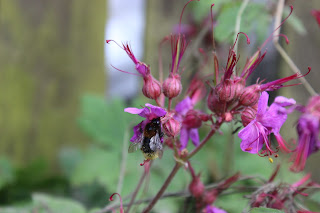Yann Tschichold
Tschichold's work has possibly been the single most influential set of principles which have informed the design decisions of the project, in particular, his book 'The Form of the book'. Many of his ideologies have been adopted and challenged throughout the design process, distinctly his laws on ivory page colour and curves spines have been identified and ignored due to contrasting research on modern photographic books and their production methods which suggest that this is quite an outdated approach. However, his rules of writing on horizontal type on the spine for noticeability have been applied to all designs up to date due to the importance of successfully identifying a book on a shelf.
Other quotes from Tschichold's other books and academic texts were also distinguished during the layout design process, for instance, in the book '
The New Typography' (1928) he talks about the aesthetics of asymmetry.
'Asymmetry is the rhythmic expression of funtional design. In addition to being more logical, asymmetry has the advantage that its complete appearance is far more optically effective than symmetry.'
This logical approach to asymmetry has heavily informed the project, particularly the pages which display Vinyl Record Sleeves. It has been a quandary for a while wether to use right alignment on the double page spreads right side in order to create a symmetrical alignment with the left alignment of the pages on the left. The project has been striving towards a symmetrical composition for a while due to Gestalts design principles of symmetrical design however, Yann's concept of asymmetrical design has given the project a new outlook and has informed the page design prioritise legibility over a symmetrical layout.
White space, along with a minimalist design is also alluded within Yann's quote 'White space is to be regarded as an active element, not a passive background.' this has had a large impact how much content is positioned on each page. This practice is not the most eco-friendly process as the amount of paper used increases however, it is crucial in order to isolate each piece of content on a bed of negative space. This gives each photograph more exclusivity and impact instead of being buried within an overstimulating design heavy layout including a variety of images.
Irma Boom
Irma has not had a large impact on the overall design however, this quote has been increasingly influential as the project has advanced.
'No restrictions make it very difficult, we have to create our own framework. If the commissioner does not do it, then we have to do it. It has to be comprehensive, otherwise it does not work.'
It created a frame work which the project has revolved around, without restrictions the project could have spun out of control. Focusing heavily on production price and available printing methods has made the publication more restraining and interesting to tackle, much like an architect figuring out how to build on a small unusually shaped piece of land.
Piet Mondrian
Piet Mondrian, a highly regarded minimalist painter and artist, also has many structural and compositional laws which can be transferred across into a modern graphical practice. For instance, the quote below regarding a balance of vertical and horizontal linear structure can be interpreted into modern editorial grid systems.
“showing the dynamic balance of vertical and horizontal linear structure and simple, fundamental colour.”
These philosophies are transferable across any creative practice.
Ernst Keller & Josef Muller-Brockmann
Ernst Keller had the principles of creating an extremely organised layout and clean grid system which structured layout and type throughout his work to create a very modernist consistency. These rules and ideologies are laid out in
Josef Muller-Brockmann's book, 'Grid Systems in Graphic Design'. Taking the book out from the library helped to learn the principles of grid system design to create consistency within my own publication.
External Secondary Source Influential Blog Quotes
Other quotes which have been gathered from various blog posts across the internet which help inform my practice within this project,
'the medieval English philosopher and Franciscan monk William of Occam (1285-1349) "Pluralitas non est ponenda sine neccesitate" or "plurality should not be posited without necessity.""Einstein's razor", agrees with Occam, but warns about too much simplicity. It says "Everything should be made as simple as possible, but no simpler." This has become known as the "KISS principle": Keep It Simple, Stupid — but never oversimplify.'
Quote taken from:
http://guity-novin.blogspot.co.uk/2010/03/history-of-graphic-design-minamalism.html

















































